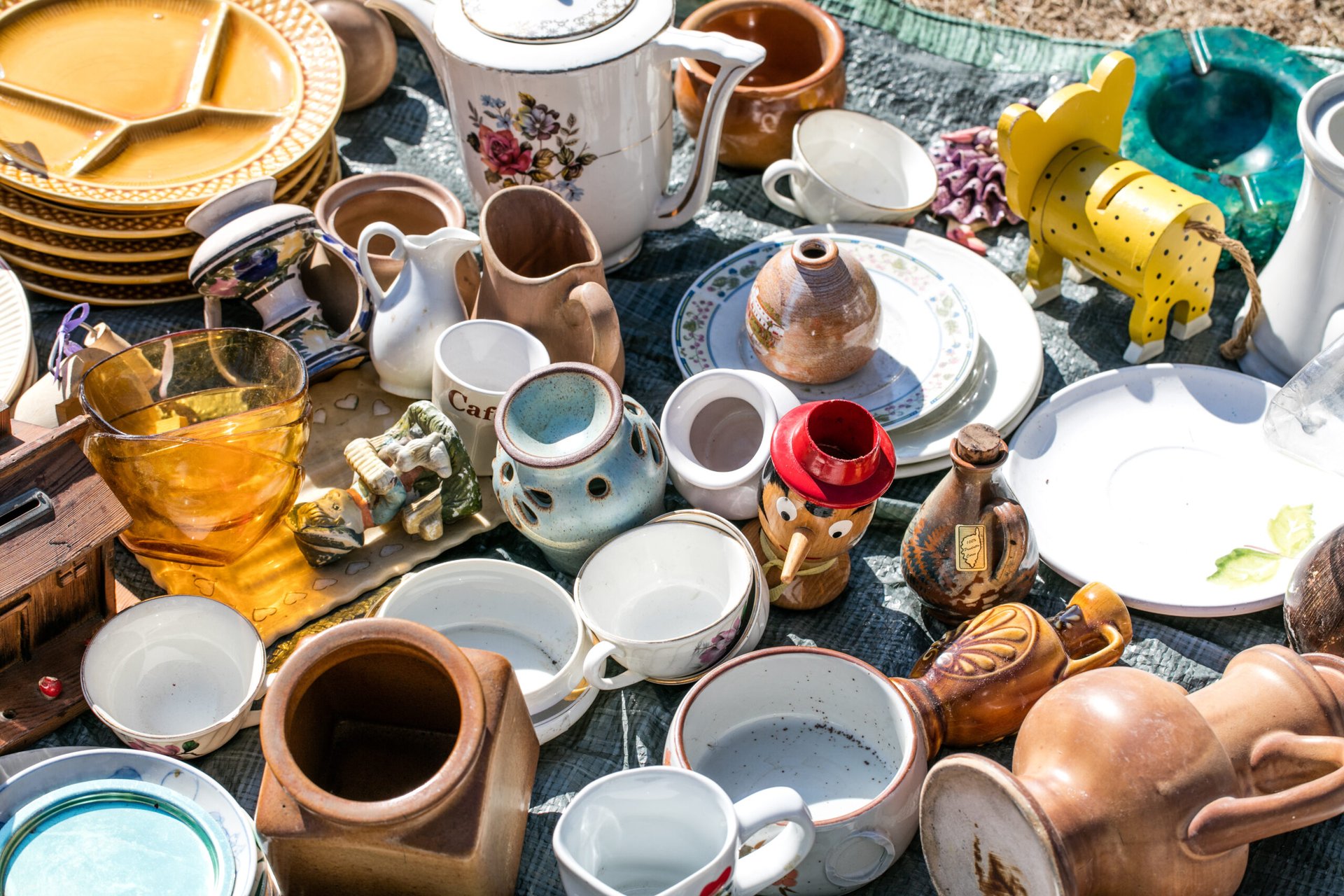
Shopping thrift stores, flea markets and estate sales can be overwhelming. With the sheer volume of stuff, how do you know where to start? How do you spot gems amid all the junk?
As a professional reseller who has been combing through thrift stores for the better part of 30 years, I can help. If you’re ready to cut your shopping time in half, score bigger bargains or walk away with brag-worthy finds you can flip for cash, read on.
From hard-to-find household items to resale money-makers, everything featured in my “Thrift Shop Like a Pro” series qualifies as a BOLO (“be on the lookout” for) item. When you find it, buy it!
Featured find: Vintage Heath Ceramics
Heath Ceramics was founded in 1948 by Edith Heath and her husband, Brian Heath. Trained at the Chicago Art Institute and the San Francisco Art Institute, Edith was the potter.
The couple launched the company shortly after Edith’s dinnerware got the attention of Gump’s, a luxury housewares retailer based in San Francisco.
Behind the scenes, Brian managed the business and helped design new equipment to automate production without sacrificing quality.
Together, Edith and Brian made Heath Ceramics an internationally known brand known for high-quality modern dinnerware as well as architectural tile.
Shortly before Edith’s death in 2005, Heath Ceramics was purchased by the design team of Robin Petravic and Catherine Bailey. Through collaborations with new artists and an expanded product line that includes wallpaper and linens, the company is still going strong.
Why buy it?
Edith Heath is a midcentury icon. Her designs are deceptively simple, the result of exacting standards and an incredible understanding of the properties of different clays and glazes.
Her work is part of the permanent collection of the San Francisco Museum of Modern Art and the Museum of Modern Art in New York City.
Practically speaking, Heath pieces are incredibly easy to live with. Glazes are fairly neutral and the clay formulation the company used produced durable tableware that can last for generations. If you’re lucky enough to stumble upon a complete set, consider making it your daily dinnerware.
And if you are interested in reselling for profit, Heath dishes make wishes come true.
This large serving bowl recently sold for $250 on eBay and these four dinner plates sold for $125. On Etsy, this hand-thrown studio bowl is priced at — get ready for it — $8,500. If that doesn’t get your thrift-shopping juices flowing, I don’t know what will.
What to look for
No need to guess whether you’ve found an authentic Heath. Vintage pieces are well-marked with an impressed logo on the underside.
The most common version features an all-caps “HEATH” with the descending line of the “T” dropping lower than the wordmark to create an “L” shape. A small inverted triangle rests on the horizontal line of the “L.” Though there’s little information to help us deconstruct the logo, I believe the “L” and triangle combination is meant to evoke a piece of pottery resting on a table or potter’s wheel.
Pro tip: On factory-made pieces, the impressed HEATH mark is often obscured by glaze that pools during the firing process. Confirm the maker by examining the bottom surface from different angles. Shifting light helps catch subtle details of the logo.
Heath studio pieces are typically marked by hand with a simple incised “HEATH” in all caps. If you’re not paying attention, you could easily dismiss the “signature” as that of a high school art student or amateur potter.
Though all vintage pieces are valuable, Heath collectors particularly prize the following:
- Studio pieces: Studio pieces are handmade one-off or limited edition designs. Identify them by the roughly inscribed wordmark mentioned above.
- Serape pieces: Heath’s Serape line features a striking blue glaze that was created by mixing three glazes together with Heath’s Moonstone glaze. Quite rare, Serape pieces can sell for triple the amount of other production pieces.
- Buttons: Dubbed “kiln fillers” by Edith, ceramic buttons were a short-lived extension of Heath’s product line. Examples are so rare that I was unable to find value estimates.




Add a Comment
Our Policy: We welcome relevant and respectful comments in order to foster healthy and informative discussions. All other comments may be removed. Comments with links are automatically held for moderation.